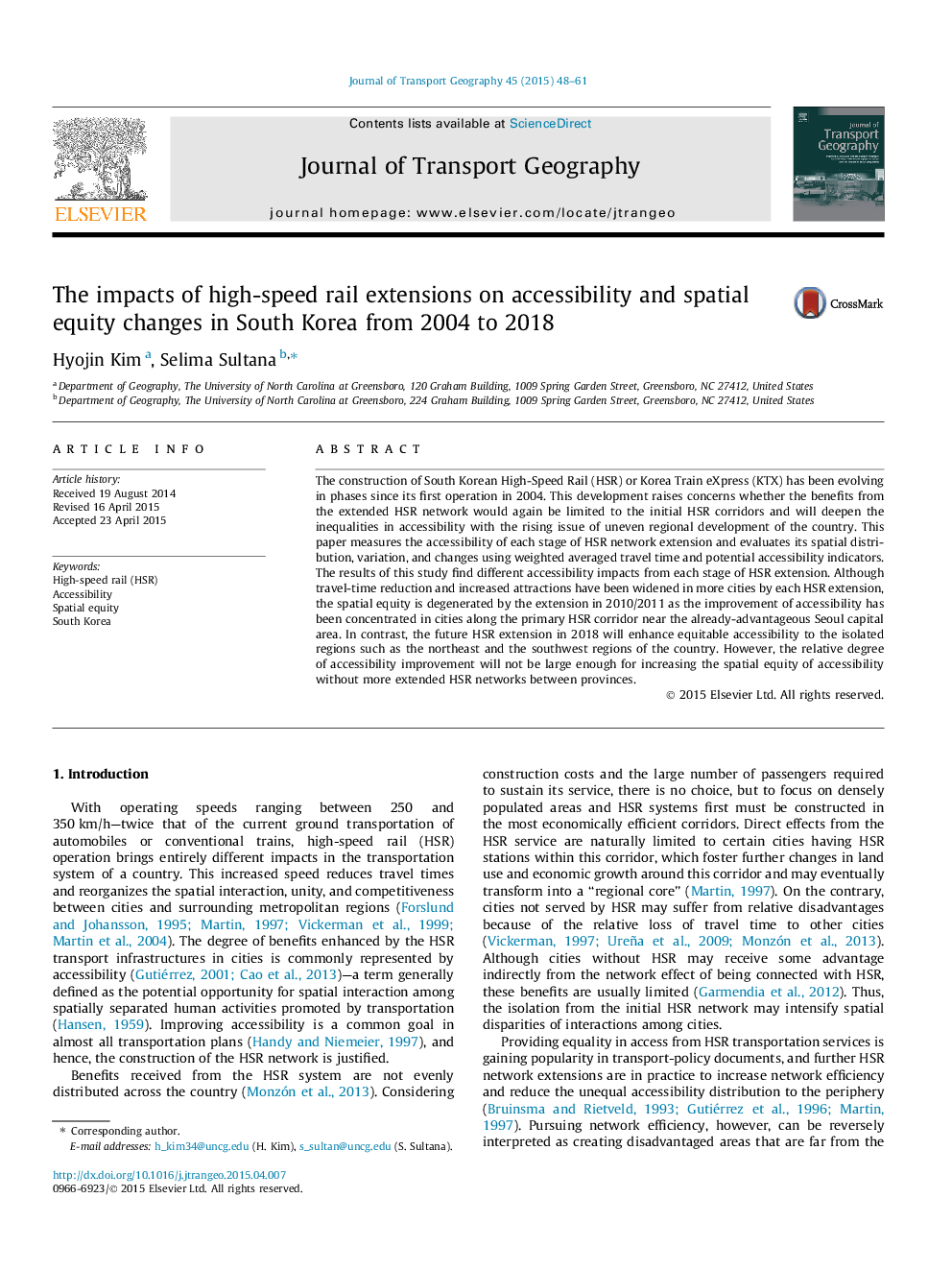| کد مقاله | کد نشریه | سال انتشار | مقاله انگلیسی | نسخه تمام متن |
|---|---|---|---|---|
| 1059135 | 1485422 | 2015 | 14 صفحه PDF | دانلود رایگان |
• Efficiency may have played a more important consideration than spatial equity at the initial stage (S1) of HSR network.
• After the completion of S2, the internal inequality in many regions got even worse than that of the initial stage (S1) of HSR network.
• Future HSR extension in 2018 (S3) will enhance equitable accessibility to the isolated regions in the country.
• The relative degree of accessibility improvement will not be large enough for closing the spatial-equity gap without further extension of HSR networks beyond 2018.
The construction of South Korean High-Speed Rail (HSR) or Korea Train eXpress (KTX) has been evolving in phases since its first operation in 2004. This development raises concerns whether the benefits from the extended HSR network would again be limited to the initial HSR corridors and will deepen the inequalities in accessibility with the rising issue of uneven regional development of the country. This paper measures the accessibility of each stage of HSR network extension and evaluates its spatial distribution, variation, and changes using weighted averaged travel time and potential accessibility indicators. The results of this study find different accessibility impacts from each stage of HSR extension. Although travel-time reduction and increased attractions have been widened in more cities by each HSR extension, the spatial equity is degenerated by the extension in 2010/2011 as the improvement of accessibility has been concentrated in cities along the primary HSR corridor near the already-advantageous Seoul capital area. In contrast, the future HSR extension in 2018 will enhance equitable accessibility to the isolated regions such as the northeast and the southwest regions of the country. However, the relative degree of accessibility improvement will not be large enough for increasing the spatial equity of accessibility without more extended HSR networks between provinces.
Journal: Journal of Transport Geography - Volume 45, May 2015, Pages 48–61
